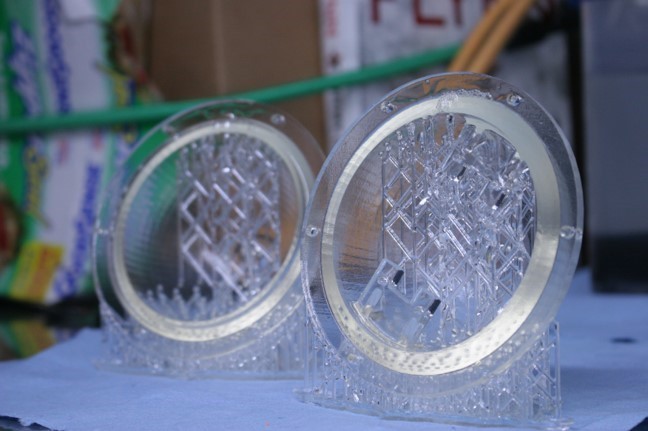Images courtesy of the NOAA Office of Ocean Exploration and Research, Mapping Deepwater Areas in the Caribbean and South Atlantic Bight.
A team of four University of Rhode Island students came up with a stabilizing system for using a 3D printer at sea that can generate critical ship equipment.
Seniors Josh Allder, Grady Bolan, Sean Nagle and Allison Redington chose the 3D printing at sea as their ocean engineering capstone project. They came up with the idea because they had more of a robotics background than some of their peers.
The team was trying to find a stabilizing system for a stereolithography type 3D printer at sea, which uses UV lasers to cure a liquid resin. It goes layer by layer to create much finer resolution and higher detail work. It is ideal to make small holes or weird shapes that are hard to replicate.
“The main problem was that when the ship was moving around that liquid resin is also going to slosh,” Redington, a senior ocean engineering major, said. “The first semester, we found a commercial solution. There was a system called the Gyropro which was originally meant for IMAX cameras. We adjusted that so that we could use our printer on it.”
The students had an opportunity to board the Okeanos Explorer, a research vessel which was at its home port in Quonset, Rhode Island last semester. The vessel was going on a transit voyage from Puerto Rico to the Bahamas.
“The invite came from a National Oceanic and Atmospheric Administration (NOAA) officer Nikolai Pawlenko who took a shining to the kids,” Brennan Phillips, assistant professor of ocean engineering, said. “The students really made that happen at the tour of the ship. They asked really good questions and made it clear that they had a good idea of what they were trying to do.”
There are several applications to using a successfully stabilized SLA 3D printer at sea. Many Navy officers had initially discounted for this stabilization and were impressed with the student’s research.
“One of the things they can do is that they can very accurately and quickly print molds, which are often used in dentistry” Phillips said. “In the U.S. Navy alone, there are thousands of sailors at sea at any given time. If you’re going to go to sea for a long time, you have a dentist on board and they’d like to have this kind of printer.”
The pressure housings printed by these SLA printers can withstand immense pressures at approximately 600,000 meters. It could also potentially be used to make gaskets and other small yet important items that break on board.
“You need to bring what you need mostly because there’s limited storage space on a ship,” Redington said. “Some engineers also told us that it was difficult making brackets and things at sea, so if you’re able to design something and just print it, it saves time and a headache for everyone because they can just screw it onto the vehicle.”
The students are now focusing on coming up with their own stabilization platform.
“We’re planning on doing more field testing with our own platform in April to see how it keeps the printer stable,” Redington said. “We still have to do a lot of design and modelling work. We have to come up with some mathematical models and also understand some that already exist.”
There were few challenges and unknowns that the students had to go into the boat without fully addressing. One of the challenges was to go on board without accounting for a level sensor trip.
“It did trip and there was a problem but they were able to, in the field, figure out a way to set this thing to work so that it was keeping up with it,” Phillips said. “That’s exactly what ocean engineering is. You do a bunch of planning and you also equip yourself, mentally and physically, with whatever tools you need so that you can react to those problems in the field.”

